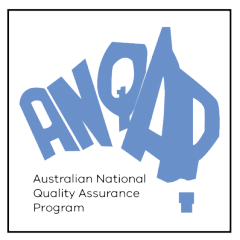Veterinary Proficiency Testing Scheme (PTS)
ANQAP offers 37 tests for bacterial and viral diseases of animals. The tests available include agar gel immunodiffusion, enzyme linked immunosorbent assay, virus neutralisation, complement fixation, virus isolation, bacterial culture, microscopic agglutination and polymerase chain reaction tests.
For the complete list of tests, please refer to the Test Timetable 2023-2024 or the Test Timetable 2024-2025.
For each proficiency test, a panel of samples is sent to each participating laboratory for testing. The panel is comprised of six samples with at least one negative, one low positive and one high positive sample, if available, to reflect a range of results likely to be found in routine diagnostic testing. Participants are encouraged to treat the panel as diagnostic specimens and include them within the routine testing schedule.
The participant is given approximately 8 weeks to test and report results. ANQAP collate the results and prepare a report summarizing the results of all participants. The ANQAP report includes statistical analysis (where appropriate and applicable) and a classification of the results (either satisfactory, demonstrating minor variation or unacceptable). Participants who receive an unacceptable classification are encouraged to take corrective action.
The Veterinary PTS is NATA Accredited.
National Plant Health Proficiency Testing Program (NPHPTP)
The bacteria, fungi, nematode and invertebrate specimens are supplied to participants for identification. Participants are required to identify the pathogen to the level usually provided by the participant. For example, a participant may only identify some invertebrates to genus level therefore correctly identifying the specimen to genus level will result in a ‘Concordant’ classification.
The virus and phytoplasma panels usually include six specimens that are either positive or negative for the target agent which is changed annually. Participants are required to correctly identify which samples are positive and which are negative.
The NPHPTP PTS is not NATA Accredited however its structure is in-line with that of the Veterinary PTS, with allowances made for sample acquisition.
Currently the NPHPTP is not open for enrolment through ANQAP.

